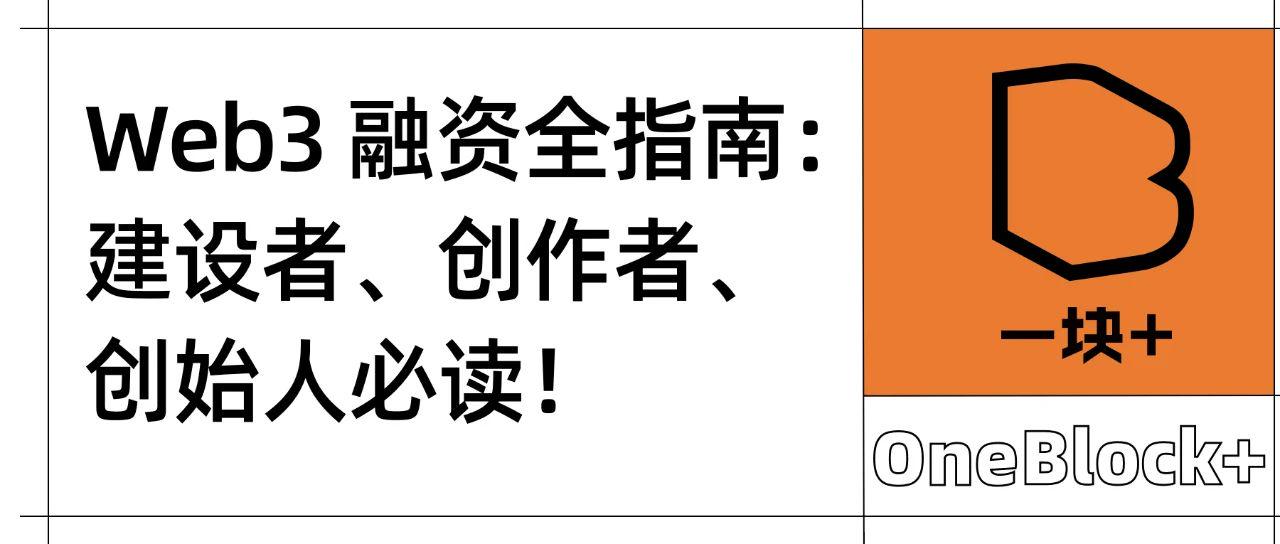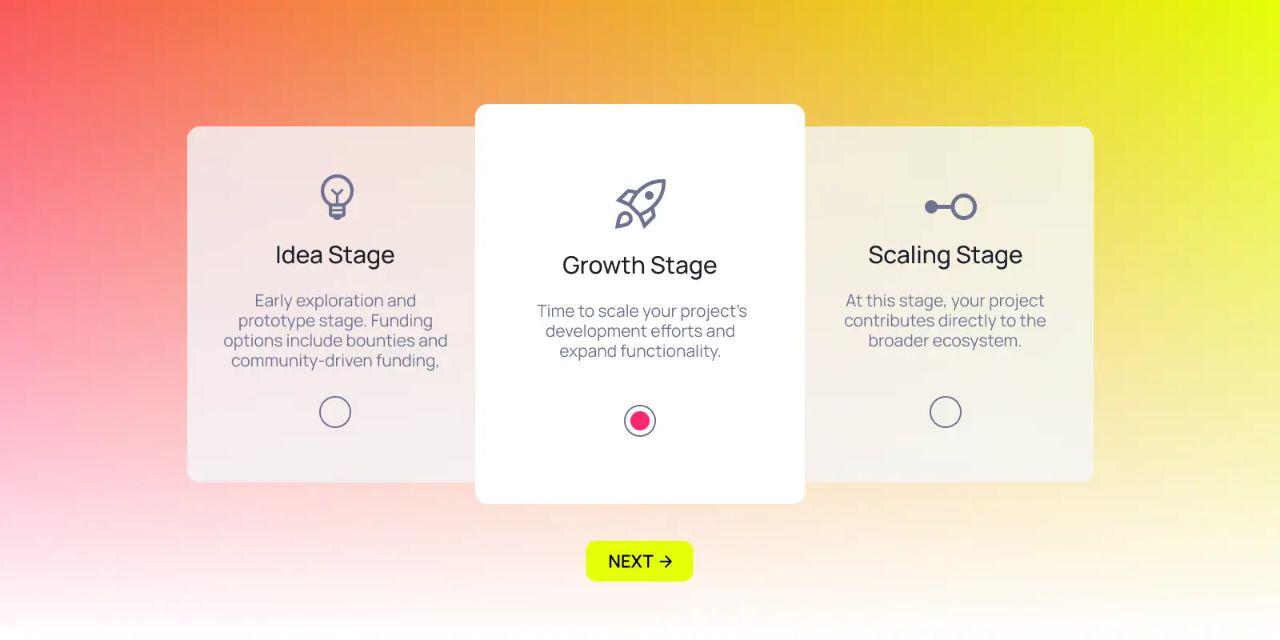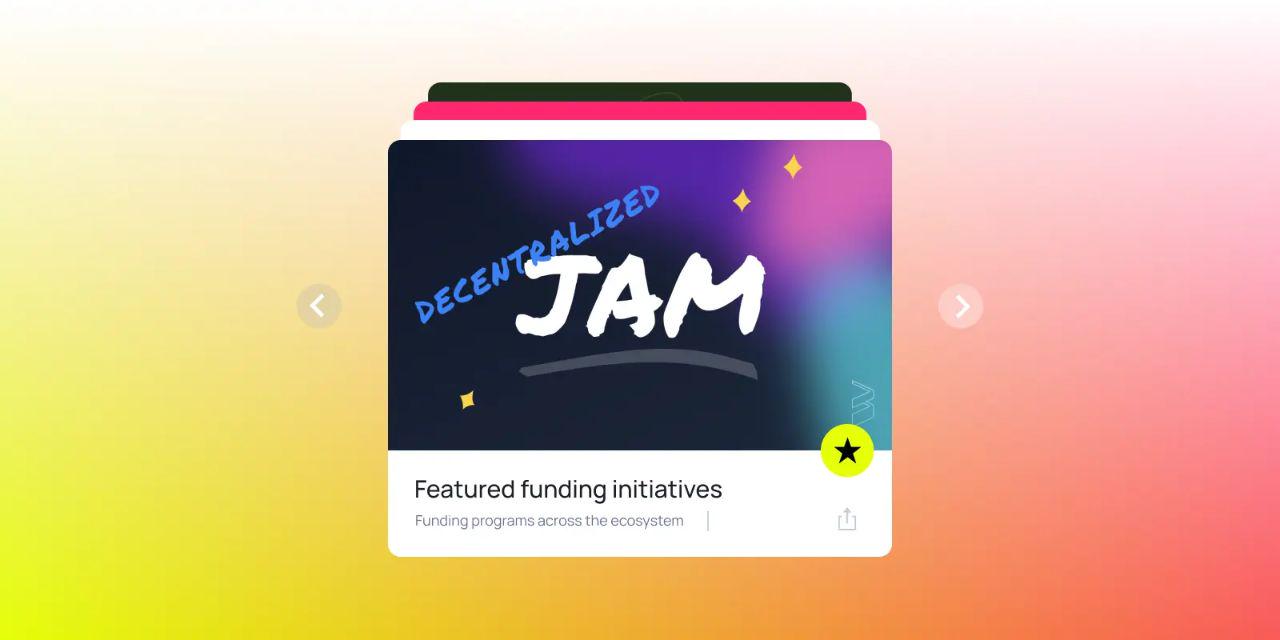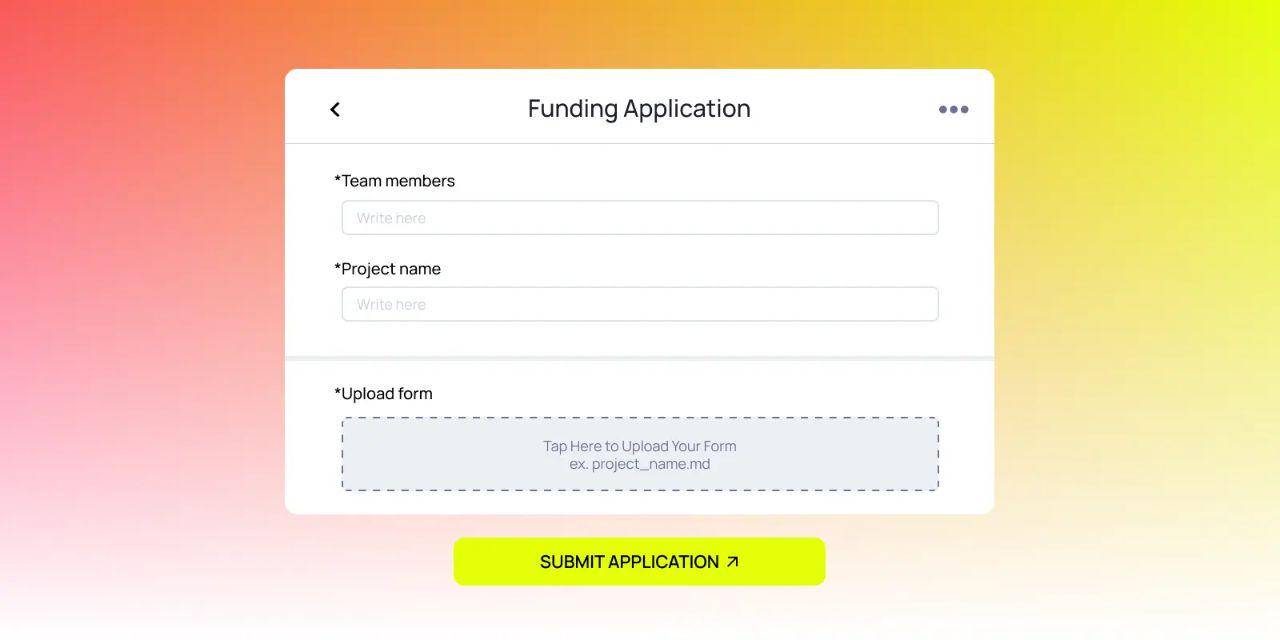
Builders are working hard to experiment, polish, and push boundaries to create Web3 innovations that truly change the future! Whether developing your first dApp, scaling a Web3 startup, or entering a new market, getting the right funding is key to driving project growth. Polkadot's funding ecosystem is not limited to grants and bounties, but a dynamic network of resources that evolves with builders. From top accelerators and venture capital to community-driven platforms and on-chain financing, a variety of financing avenues are paving the way for breakthroughs at every stage.
What's even more exciting is that tracks such as DeFi, DePIN, AI, RWA , and games are ushering in a new wave of financing opportunities. Whether it's testing ideas, developing products, or expanding infrastructure, it's crucial to have a deep understanding of financing options. Now is the best time to re-examine the financing landscape of the Polkadot ecosystem - a new round of grants, bounties, and decentralized funding flows are emerging, providing more possibilities for teams that dare to think and act to turn their dreams into reality!
How the financing landscape is changing
Polkadot’s funding model continues to evolve, introducing new opportunities while improving existing programs to align with long-term decentralization goals. Recent shifts in funding priorities reflect broader Web3 trends and the need for scalable infrastructure.
Evolving Ecosystem Priorities
In addition to core infrastructure funding, Polkadot’s funding mechanism also re-emphasizes:
DePIN and Sustainability: Supporting projects that decentralize real-world infrastructure, from connectivity solutions to distributed energy networks, with a focus on sustainable mechanisms.
AI & Data Integrity: Promote projects that leverage Polkadot’s composability to power AI dapps, data sharing protocols, and automation layers, including privacy-preserving AI and verifiable on-chain data.
Cross-chain games and digital assets: Encouraging the proliferation of blockchain games that interact with crypto rails, including digital asset ownership and liquidity, smart contract composability across different rollups, and real-world asset tokenization.
Expanding Opportunities and Access
As new funding streams become available, existing programs are expanding to improve access:
Higher funding cap for the Polkadot Treasury: Larger treasury allocations now support infrastructure-level projects that have a broader impact on the ecosystem, making on-chain governance an even more powerful funding tool.
Accelerator Programs: Emerging programs designed to help startups enter new markets, fine-tune product-market fit, and strengthen business development strategies.
Fundraising Platform and Growth Initiatives: Beyond direct funding, Polimec provides a decentralized fundraising protocol for Web3 projects, while Polkaport East drives investor relations and business development in Asia, creating more opportunities for startups and ecosystem builders.
Choose the right financing method

Polkadot offers a range of funding channels tailored to different stages of project development. Whether you are validating an idea, developing a product, or scaling infrastructure, choosing the right mechanism can make a difference.
🌱 Ideation phase: early exploration and prototyping
For projects in the early stages of development, having quick access to funding can help validate concepts and build proof-of-concept solutions.
Bounties: Best for developers or small teams working on specific technical challenges in the Polkadot ecosystem. Bounties offer task-based rewards and are generally paid out faster than grants. For example, the Polkadot DeFi Infrastructure and Tools Bounty Program funds key ecosystem tooling and infrastructure development.
Community Fundraising: Crowdfunding platforms offer decentralized fundraising, enabling projects to raise funds directly from the community without relying on grants or VCs. This model helps build an early support network while securing initial resources.
🔑 Pro Tip: Contributing to a bounty helps build credibility and demonstrates technical expertise, which can strengthen future grant applications.
🪴 Growth phase: development and expansion
Once a project moves beyond the prototype stage, access to structured funding can help with product development, integration, and market positioning.
Network Development Grants: Programs such as the Web3 Foundation Grants Program provide funding for projects that enhance Polkadot and Kusama, particularly those focused on infrastructure, interoperability, and security.
Ecosystem-specific programs: Individual rollups, such as Peaq, Moonbeam, and Pendulum, provide grants to projects built directly on their networks. These grants often come with technical mentorship and ecosystem support.
🔑 Pro Tip: Before applying for a grant, check the specific focus areas and eligibility requirements of the funding program. Some grants prioritize infrastructure, while others focus on DeFi, AI, or gaming.
🌳 Expansion phase: Expanding ecosystem impact
At this stage, funding options focus on scaling operations, driving ecosystem impact, and expanding market reach.
Venture Capital (VC): Firms such as Scytale and Harbour Industrial Capital invest in Web3 startups, providing funding, strategic guidance, and access to their networks. VC funding is well suited for projects that aim to scale quickly, but may require giving up equity or token allocations.
Polkadot Treasury: The Polkadot Treasury, run by OpenGov , provides funding for projects that provide long-term ecosystem value. This includes infrastructure development, tooling, education, and ecosystem-wide initiatives. Treasury funding is approved by the community and requires proposal submission.
Premium Bounties: Large-scale bounties, such as the Dot Play Game Bounty, fund long-term development work, particularly in games, creator-centric applications, and infrastructure tools.
🔑 Pro Tip: Funding requires community approval, so engaging with the Polkadot community (whether through forums, governance discussions, or direct feedback) can help refine your proposal and improve its chances of success.
Navigating Polkadot’s funding landscape means building connections, engaging with the community, and scaling strategically. Many successful projects combine multiple sources, using bounties to kick-start development, grants to drive structural progress, and venture capital funding to scale.
Featured Funding Programs

Polkadot’s funding ecosystem includes a series of structured programs designed to help builders at every stage. The following sections provide funding, guidance, technical resources, and strategic support to the Web3 Foundation.
Open Source Developer Grant Program: A Treasury-funded program that supports individuals and small teams developing open source software for the Polkadot ecosystem.
Polkadot x ERA Global Program: A 12-week startup accelerator program in partnership with Entrepreneurs Roundtable Accelerator (ERA) designed to help Polkadot startups scale and enter the U.S. market. The first pilot will run from February 17 to mid-May 2025 in New York City, combining intensive mentorship, structured business courses, and valuable industry connections.
W3F Grants Program: A long-running grants program (since 2019) that supports software development and research projects to enhance the Polkadot ecosystem through quarterly selection waves. The program provides tiered funding while providing grantees with ecosystem connections and promotional opportunities.
JAM Prize: 10 million DOT and 100,000 KSM for developing multiple implementations of JAM (Join-Accumulate Machine) - a new protocol designed to inherit the Polkadot Chain - with enhanced smart contract capabilities. The JAM Prize is built around five progressive milestones, encouraging experienced development teams to create compatible clients in different programming environments (from OCaml and Go to Zig) and gradually improve the technical foundation and resilience of the ecosystem.
Funding Opportunities Summary

Polkadot offers a variety of funding options to support builders at every stage. Whether you are launching a new project, scaling infrastructure, or expanding your product, these programs provide funding, guidance, and technical resources to help drive innovation.
Network Development and Innovation Fund
To provide funding for projects and things that improve the entire Polkadot network.
Polkadot Ecosystem Fund: Led by Scytale, an industry-leading digital asset management company and investment firm focused on accelerating early-stage blockchain and crypto projects. Their portfolio includes well-known Polkadot projects such as Astar and Centrifuge, and they recently launched a dedicated Polkadot Ecosystem Fund to support projects built on Polkadot and its rollups.
Polkadot Ecosystem Fund II: An independent initiative of Harbour Industrial Capital focused on venture capital and liquidity investment strategies. They focus on strategic investments in growth-stage companies, co-investments with external venture capital, and early-stage (pre-seed/seed) financing through equity and tokens, with a portfolio including peaq, Mythical, and Mandala.
Polkadot Pioneers Prize: A bounty-based grant program offering nearly 1 million DOT tokens to innovators solving key challenges in the Polkadot ecosystem. Funded by Polkadot’s on-chain treasury and governed by token holders, the Pioneers Prize has already supported notable projects such as the Zprize winners in the field of zero-knowledge cryptography.
Decentralized Futures: A comprehensive grant program from W3F that supports for-profit and non-profit ventures in technology, marketing, and business development, with the strategic goal of scaling initiatives within the Polkadot ecosystem.
Polkadot DeFi Infrastructure and Tooling Bounty: Sponsored by Velocity Labs, the bounty allocates $4M to accelerate the development of basic infrastructure components such as token infrastructure, chain abstraction solutions, and onboarding tools to address Polkadot adoption barriers.
Game Bounty Grant Program: Started by DotPlay, the program connects talented developers with resources to build on Polkadot. Join the community of “new superstars” and receive financial support tailored for ecosystem tooling and game creation. The accelerator prioritizes mass-market, creator-driven projects with global potential.
Ecosystem Specific Initiatives
Acala Ecosystem Program: Provides funding and comprehensive support to vetted early-stage startups building solutions that integrate the Acala protocol. Recipients benefit from technical mentoring, ecosystem connections, and strategic guidance.
Aleph Zero 's Ecosystem Grant Program: Launched in 2024, this program aims to support projects ranging from proof-of-concepts and early-stage companies to experienced teams that have deployed their own solutions on different platforms. The program offers four tracks from a $45M grant pool with the goal of expanding the functionality and adoption of the Aleph Zero chain.
Avail's grant program provides funding for developers working on ecosystem enhancement projects, RFP-based grants for targeted development, and small grants for open source contributions. The program focuses on improving infrastructure, tools, and cryptographic research, supporting free, open source, and non-commercial initiatives that drive positive-sum results.
Darwinia Grants and Bounty Program: The grant program provides cross-chain development funding support to projects at different stages, while the bounty program encourages community developers to translate by solving problems and enhancing the Darwinia chain and Msgport's S Ports.
Hydration Grants and Bounty Program: Provides rewards for contributions such as bug fixes, development work, and translations, with up to $100,000 in HDX rewards available. The program is overseen by the Hydration Committee, ensuring that funds are allocated efficiently to drive growth and innovation in the ecosystem.
Peaq's DePIN Grant Program: aims to support early-stage projects focused on the Decentralized Physical Infrastructure Network (DePIN), enabling developers to build innovative applications and tools. By funding these programs, Peaq aims to expand its ecosystem and integrate more physical infrastructure on the chain.
Moonbeam Innovation Fund: A $10 million program dedicated to advancing key areas such as gaming and real-world assets (RWA) on its platform. The fund also allocates resources to support the Moonriver network, providing funding for ecosystem development and infrastructure improvements.
Pendulum Grants Program: Focused on bridging the gap between the fiat and DeFi ecosystems by supporting the development of key infrastructure such as AMMs, lending protocols, and stable fiat tokens. The program provides financial and technical support to projects built on Pendulum’s fiat-optimized blockchain.
Start with the right funding
and expand your project
The Polkadot ecosystem continues to grow, providing new and expanded funding opportunities for builders, creators, and innovators at every stage of their journey. Whether you are just starting to prototype your idea, scaling infrastructure for mass adoption, or exploring cutting-edge areas like AI, DePIN, or GameFi, there is a funding path to help you turn your project into reality.
If you are looking for a comprehensive overview of previous funding programs, check out the 2024 Polkadot Grants and Funding Guide, which covers past opportunities. Keep in mind that as the ecosystem continues to grow and change, some information may now be out of date.
Frequently asked questions
I can do this without relying on grants and bounties
Raising funds for my project?
Yes! Projects like Polimec offer decentralized fundraising opportunities where the community can directly support projects through structured funding rounds.
What is the difference between a grant and a bounty?
Grants and bounties both provide funding, but they serve different purposes.
Grants are for large, structured projects that contribute long-term value to the ecosystem. They typically require an application process, milestones, and deliverables before allocating funds. Examples include ecosystem-wide grants from the Web3 Foundation, or ecosystem-specific grants from rollups like Peaq, Pendulum, and Moonbeam.
Bounties are task-based incentives that reward contributors for solving specific challenges. Unlike grants, they do not require extensive proposals, only the ability to complete the task. Bounties are ideal for developers who want to contribute to key ecosystem initiatives while getting paid for their work. The Polkadot DeFi Infrastructure and Tools Bounty is an example of this, which is funding key ecosystem tools, sometimes with a faster payout model than grants.
TLD : Grants support long-term projects through structured funding, while bounties provide one-time rewards for completing defined tasks or milestones.
Polkadot Ecosystem
Are there any funding opportunities for non-technical creators?
Yes! While many grants and bounties focus on development, there are also opportunities for non-technical contributors including community builders, educators, and content creators.
Polimec supports community-driven fundraising, enabling creators to receive funding from supporters without relying on technical funding.
The Polkadot Treasury provides funding for marketing, educational content, and community initiatives, and proposals are voted on through OpenGov.
Polkaport East supports Polkadot adoption in Asia, creating opportunities for networking, business development, and ecosystem engagement.
Should I seek venture capital?
Or community-driven funding?
It depends on your project goals, timeline, and how much ownership you’re willing to trade.
Venture capital is well suited for high-growth projects that require large amounts of capital, strategic guidance, and industry networks. However, venture capital funding is usually in exchange for equity or tokens, which means giving up a certain degree of ownership or control. Firms such as Scytale and Harbour Industrial Capital invest in Polkadot-based startups, providing funding and strategic support.
Community-driven funding is more decentralized, allowing projects to raise funds directly from the Web3 community. For example, Polimec supports token-based fundraising, aligning projects with a community of supporters who believe in their vision. This approach promotes organic adoption and long-term engagement, but may require more effort to gain traction.
Original link: https://polkadot.com/blog/web3-funding-grants-resource#featured-funding-programs














